THE LAND ISSUE
ALAN BULLEY RE:PLACED

STEVE KEAN MOVING LANDSCAPES
ELLA MORTON NORTHERN CURIOSITY
A POEM BY TENILLE CAMPBELL + MORE
WINTER 2023/2024

Capture the decisive moment with Tamron.








Tamron lenses deliver a superb fusion of performance and value, enabling today’s cameras to perform at their peak, and are designed for remarkable optical performance.










































© Ian Plant ONLY AVAILABLE AT YOUR AUTHORIZED TAMRON AMERICAS RETAILER www.tamron-americas.com ALL NEW G2 ALL NEW G2 ULTRA WIDEANGLE STANDARD
70-180mm
ZOOM LENS for Sony E-Mount [ model A063] 28-75mm F/2.8 Di III VXD G2 TELEPHOTO ZOOM LENS for Sony E-Mount [ model A065]
F/2.8 Di III VC VXD G2 [ model A046] 17-28mm F/2.8 Di III RXD WIDE-ANGLE ZOOM LENS for Sony E-Mount
“Sad Moon Rising” from the series, Where will the frogs sing?
“ The landscape of Saskatchewan is changing as small remnants of land are destroyed to make way for large-scale industrial farming and development.”
verasaltzman.com IG:@vera.saltzman

Featuring: Janet Hinkle, Arlin Ffrench, Vera Saltzman, Joanne White, Julie Florio, TJ Watt, Edward Peck, Jeff Adams, Rachel Foster, Richard Miller & Geneviéve Thibault, Richard Robesco, and Richelle Forsey
Bart Gazzola
VERA
SALTZMAN Fort Qu’Appelle, SK
6 RESOURCES WE LOVE By Alan Bulley 11 SCARBOROUGH MADE: RECLAIMING COMMUNITY SPACE By Sid Naidu 13 THIS SUMMER WE TRAVELLED A poem by Tenille Campbell 20 ELLA MORTON: NORTHERN CURIOSITY By
vanGerwen 28 STEVE KEAN: MOVING LANDSCAPES By
34 PORTFOLIO
48 JAIME BLACK-MORSETTE : INTUITIVE RITUAL By Darren Pottie 53 ALAN BULLEY RE: PLACED 60 THE GALLERY Submissions by our readers IN THIS ISSUE...
Corinna

LENS BIG

SIGMA lenses are distributed in Canada exclusively by Gentec International, one of Canada’s Best Managed Companies • gentec-intl.com To find an authorized SIGMA retailer near you, visit sigmacanada.ca/where-to- buy SIGMA 10 -18mm F2.8 DC DN | Contemporary The world’s smallest and lightest ultra-wide-angle zoom lens for APS-C cameras. Available for Sony E-Mount, L-Mount and FUJIFILM X Mount. SMALL
PERSONALITY
by: Johannes Hulsch - SIGMA 10-18 mm F2.8 DC DN | Contemporary Explore the world of SIGMA sigmacanada.ca Discover our artisan stories sigmaartisans.com
Photo
EDITOR ’ S NOTE
THE THEME OF LAND PRESENTS CONTENTIOUS AND INSPIRING POSSIBILITIES FOR PHOTOGRAPHERS.

“ The Earth is what we all have in common.”
— Wendell Berry
From clearly demonstrating the abuse we inflict on our Earth, to celebrating and expressing beauty and gratitude for the land we live on, the artists in this edition collectively bring forth an incredible range of observations, possibilities, and questions about the future on our planet.
Ella Morton’s analog manipulations speak to her layered experiences of exploring cold northern climates. Her photographs of Arctic lands simultaneously convey stoic beauty and unprecedented environmental changes, overlaid with physical (and metaphorical) human manipulations.
Meanwhile, Steve Kean shares his experiences with land, raising questions around the physical experiences we have in nature, or the absence of those experiences, when challenged with accessibility issues.
This edition also features an exciting first: the commission of a poem. I am especially excited to share an original new work by photographer and writer Tenille Campbell, which was used as a prompt for creative responses from our
Patreon community. Check out the visual interpretations we received in response to her words on page 13.
I hope readers will find inspiration in this edition to reflect on and acknowledge that Turtle Island — although fraught with contentious political issues and decisions — is a place we must all work together to heal. It is with gratitude and respect to the First Peoples that came before me that I have the opportunity to live and work on their traditional lands.
Looking ahead, our Spring 2024 edition will be our 70th edition in print! We thought it would be fitting to make this upcoming edition a celebration of LIGHT. If your work embraces light from a fresh perspective, find out more about submitting your work on our website.
Follow us on Instagram, Patreon, and Facebook, and sign up for our e-newsletter to keep up with all our adventures!

Your editor, Rita Godlevskis
PHOTO ED MAGAZINE IS 100% MADE IN CANADA! THANK YOU FOR YOUR SUPPORT!
PhotoED Magazine is published 3x/year, SPRING, FALL, & WINTER
See www.photoed.ca for subscription and advertising information. Publications Mail Agreement No. 40634032
PhotoED Magazine
2100 Bloor St. West, Suite 6218 Toronto, ON M6S 5A5
This issue was made possible with the assistance of the Ontario Arts Council and the Government of Canada.
EDITOR/PUBLISHER Rita Godlevskis / rita@photoed.ca
ART DIRECTOR Ruth Alves
CONTRIBUTING Alan Bulley
WINTER 2023 / 2024 ISSUE #69 ISSN 1708-282X WRITERS
Tenille Campbell
Bart Gazzola
Sid Naidu
Darren Pottie
Corinna vanGerwen
COPY EDITOR Deborah Cooper
EDITORIAL ASSISTANT Marie Louise Moutafchieva
COVER IMAGE “Desire Lines” by Richelle Forsey


WWW.PHOTOED.CA
@photoedmagazine
REPLICA EDITIONS ON
+ FIND OUR DIGITAL
Photo by Ryan Parker
DIG DEEPER
A FEW EARTHY RESOURCES WE RECOMMEND
BY ALAN BULLEY

MARLENE CREATES: PLACES, PATHS, AND PAUSES
Edited by Susan Gibson Garvey & Andrea Kunard
Multidisciplinary artist Marlene Creates has been digging deep into the land for over 40 years. Her explorations of “place” involve photography, memory-mapping, and site-specific works in and around the Newfoundland property where she lives in “relational aesthetic.”
Marlene Creates offers a retrospective of the artist’s output, and an extended contemplation on place and presence — that is, how the actions of people, nature, and time create meaning in particular parts of the land. There are no technicolour sunsets or sweeping vistas to be found in this collection. Instead, there is an openness to the slow, thoughtful work of seasons, and wind and, yes, humans on the land. And in a time-pressed world, that’s a very good thing.
Hardcover, 2017, 204 pages $50 + shipping
Goose Lane Editions and Beaverbrook Art Gallery Available from online retailers

ANTHROPOCENE: THE HUMAN EPOCH
Since his student days, Canadian photographer Edward Burtynsky’s practice has increasingly focused on the impacts of development and resource extraction on the land. When the award-winning Anthropocene debuted at the Toronto International Film Festival in 2018, Edward added his visual voice to those who claim that we have entered a new age, one that is attributable to human action on the planet rather than to natural processes alone. We are messing up the land (and water and air) on a global scale and we cannot avoid the consequences. This film amplifies the alarm, with a presentation that is beautiful and horrible, all at once.
2018, Jennifer Baichwal, Edward Burtynsky, and Nicholas de Pencier, Directors Available for purchase or rent on YouTube

A RIBBON OF HIGHWAY: A PHOTOGRAPHIC EXPLORATION OF CANADIAN IDENTITY
By Taylor Roades
An adventurous photographic exploration of Canada. This collection of images, taken over a decade, presents Taylor’s poignantly observed, first-person experience, visiting both recognizable and remote places across the country.
Taylor intrigues readers with images that weave local idiosyncrasies together with iconic landscapes from coast to coast. If you have travelled in any part of Canada, you will see something delightfully familiar and, in a country with so much to explore, somewhere new to add to your list.
Hardcover, 2023, 176 pages $40+ shipping rmbooks.com
6 photo ED

BLOODLINE
By Meryl McMaster
Meryl McMaster’s dreamscapes clearly demonstrate attention to production details. Her carefully selected landscapes are characters in her stories, not backdrops. In the worlds she evokes, identity is not just found within the self, but also in relation to community, culture, and the land.
This sweeping collection of her work is cast as a dialogue with her three paternal grandmothers from the Red Pheasant Cree Nation in Saskatchewan.
Along with some older work in the book, these new images compel us to reflect on the history of colonization in the place we call Canada. They might also lead us to consider how our own ‘places’ — personal, cultural, and geographical shape who and what we are now.
Hardcover, 2023, 224 pages $65 + shipping
The Magenta Foundation, Remai Modern, McMichael Canadian Art Collection shop.mcmichael.com
#SAVE HARCOURT HOUSE
3rd floor, 10215 - 112 Street, Edmonton AB T5K 1M7 harcourthouse.ab.ca info@harcourthouse.ab.ca 780 426 4180 GoFundMe


photoEd GUIDE to Photography is a 128-page magazine-format learning and teaching resource. The GUIDE provides a quick start to basic tools & techniques, and ideas for new explorations

ORDER ONLINE: PHOTOED.CA/ THE-GUIDE
ONLY $21.95 GET THE GUIDE LOOKING TO LEARN? FREE SHIPPING IN CANADA photoed.ca/submit-your-work CALL FOR SUBMISSIONS LIGHT TAKE NOTE: Our 70th edition in print will celebrate photographers taking LIGHT to the next level in their work. DEADLINE: FEBRUARY 16, 2024 Lightweight mirrorless cameras allow you to travel further and document the landscape in more remote locations. Fujifilm X-S10 w/ XF10-24mm f/4R OIS WR lens
The
BEAU PHOTO SUPPLIES 1401 W 8th Ave #110 Vancouver, BC Phone: 604.734.7771 beauphoto.com CAMERAS • LIGHTING • FILM • RENTALS • ADVICE • COMMUNITY
Image by Kathy K.
35mm
Jason
Steve
Ruth
Robert
David
Ariela
Loretta
Susan
Christine
David
Allan
Kerri-Jo
Tim
Gurudayal
Steve
Lindsey
Todd
Tracey
Mandy
Gladys
Jack
Mary
Micah
Rob
Lucy
Donna
Christine
Thomas
Xiatong
Jennifer
Charles
David


Official
Patrons
Cooper
Matsubuchi
Machinski
Scaife
Pieczonka
Akemi
Jason
Melanie
Selina
Simon
Bergen Braun Blork
Royer
J. Kenny
Badenas
Meyer Sid Naidu
Markatos
Shaw
Juliette Sherland
Rae
Murray Micheline Godbout
Michelle
Carey
Emma
Wally
Leah
Cameron
Stewart
Rahrer
Khalsa
Ricketts
Tran
McLellan
Halladay
Klein
Denis
Danielle
Lou Albert Bedward
Ellergodt
Myers
Wolfe
Carol
Frank
Gerald
McCaffrey
Kyd
Klein
& Nadia
Lopez
McFarlane
B
Julie
Alic
McCuan
Theresa
Brasch
Cai
Kamei
Kristensen-Smith
Nozomi
Melissa
King
Araujo 8 × 10 Glass Plate VIPs Ann Piché + Lori Ryerson Professional Photographers of Canada Photographes professionnels du Canada 120mm Official Patrons Gerry Stone Anonymous Jeff Baine
Childs
Daniel
Katherine
hckygrlphoto
Kerr
Goodyear
Williams
Howard
Jones
Shelagh
Laura
Campbell
Gilbert Victoria Prevot
Dean Vitalii Sovhyra Marc Delledonne Anaïs Are Shelly Priest Henry Vanderspek Sparkplug Coffee Tim Rahrer
Hughes Gonzalo Antonio Oré Del Carpio E Ross Bradley Jude Marion 4×5 Large Format Official Patrons Judith Cole Valerie Lancia Ian McKenzie Mark Walton Alan Bulley
Stark James Carey Lauder Patricia Parsons Haughland Media
Kozubski
Studios
Jennifer
Skip
Terry
Conan
Trish
AIH
Brandy Amanda Devison
Udle
Crawford
Lowman
Ken
Jim
Czesia Czyczyro
Orthner
Shanahan
Pyles
Lanctôt Leah Ann
THESE AMAZING PEOPLE SUPPORT US AS PATRONS! (AND GET EXTRA PERKS!) THANK YOU + OUR PHOTO COMMUNITY PARTNERS JOIN US! STARTING AT $3/MONTH! patreon.com/photoedmagazine FIND OUT MORE:
Collin J
M-C
Jenn
Patricia
Mowers


 Featured: Michelle Valberg
Featured: Michelle Valberg
Emergency
thinktankphoto.ca SET YOUR CAMERA TO “MANUAL” AND YOUR COFFEE TO “AUTOPILOT” It’s time for your FAVOURITE cup of COFFEE to come from your own kitchen! WWW.SPARKPLUG.COFFEE FREE SHIPPING • Save $3 on your next order with code: CAMERA
Photo: James Ramsay
Rain Cover
SCARBOROUGH MADE: RECLAIMING COMMUNITY SPACE
BY SID NAIDU


SCARBOROUGH MADE (SM) IS A SOCIAL IMPACT ORGANIZATION that champions documentary storytelling through photography and video in Toronto’s East. Co-founded by Alex Narvaez and Sid Naidu in 2019, the group aims to shift how this underserved neighbourhood is portrayed in the media, and support emerging BIPOC youth in pursuing creative work that intersects with community building. The project provides mentorship and employment opportunities for documentary storytelling, public art, and community engagement.
Since we started SM, we’ve produced five unique public art installations. These projects are active demonstrations of how artsbased engagement can positively impact neighbourhoods. The youth artists who contribute to our projects develop a stronger connection to the community that they come from.
photo ED 11
ABOVE: An aerial view of “Scarborough Made in the Parks,” an installation at Malvern Park in 2023, photo by Sid Naidu.
BELOW: SM founders Sid Naidu + Alex Narvaez.
SM Youth artists Alicia Reid and Joyce Jiang both documented stories that connect meaningfully to the topic of land. Joyce Jiang is part of our most recent cohort of youth artists who worked on this year’s parks project to engage green spaces in the community of Malvern. Working with the SM team, Joyce pitched and documented the story of Crosby Gitigaan, an Ojibwe and Shawnee family-owned farm cultivating the land for local food production by incorporating Indigenous agricultural knowledge and techniques.
Joyce says, “There’s a lot to be done for Indigenous communities seeking reconciliation. I wanted to shed light on stories not being told. Collaborating with the Crosby family allowed me to learn how people in communities contribute to solving problems around our climate crisis. I’ve always watched and had an interest in documentary-style work but have never produced anything in the genre.”
Alicia joined SM in our inaugural mentorship program in 2021. “It’s not often that you see media and artwork dedicated to Scarborough, and I loved seeing that sense of pride in my community. I was in awe seeing the installations of people I grew up learning from, spotlighted through SM,” says Alicia.
Alicia was drawn to the story of Seema David, founder of the 52N, which was a soup kitchen that had expanded into a multi-food hub that serves those in need. 52N’s garden project took over an area of land primarily used for industry to teach youth gardening skills and provide fresh produce to community members.
“From Seema’s story, I learned different aspects of being a documentarian, from using a field recorder for interviews to having my first outdoor installation. I want to be loud and proud about what Scarborough has to offer,” Alicia proudly states.
For SM, the youth artists who contribute to the documentary work and installations take their first steps as creative placemakers to reclaim everyday public spaces into landscapes that can inspire and engage. More importantly, they build strong connections to the neighbourhood to ensure we don’t neglect our land and the people who give back to our community.
“ Through SM, I learned to situate myself and be present capturing what is happening around me.”
— Joyce Jiang


For more information about this project, please visit scarboroughmade.com IG: @scarboroughmade
ABOVE: Joyce Jiang and her “Portrait of Aiden, Myra & Isaac Crosby at Crosby Gitigaan, Malvern Urban Farm in Scarborough,” installation at Malvern Park.
BELOW: Alicia Reid and her “Portrait of Seema David at 52N Garden Project Founder of 52N,” installed at the Cedarbrae Library.
12 photo ED
THIS SUMMER, WE TRAVELLED
A POEM BY TENILLE CAMPBELL

PHOTOGRAPHERS FROM ACROSS CANADA INTERPRET A POEM
WE INVITED OUR PATRONS to participate in a creative conversation through images. photoED Magazine commissioned an original poem by Tennille Campbell a Dene/Métis author and photographer from English River First Nation, Saskatchewan.
Our contributors responded to her words with an image of their own.
The following pages are a presentation of where our contributors took this story.

PHOTOED MAGAZINE PRESENTS
1 2
SUMMER, we travelled through prairie fields and under prairie skies th rough the badlands and through the foothills through mountains peaks and valleys th rough an old growth forest and by the charred remains of ancient woods in transition...




When I stood in this location at Salt Spring Island I felt the majesty of the land rising out of the surrounding ocean. But I also felt the irony of the colonial trope of a numbered picnic table and manicured lawn in this exquisite setting. 5 4 3

1. SHELLY PRIEST
This poem rests deep in my heart. I can visualize those that lived here before me. Though lives have changed, the land still beckons us to explore and discover for ourselves.
2. DAVID BRANDY
6
14 photo ED
THIS


3. JOHN HEALEY
“Roots,” 2023. Attachment, support, nourishment.
4. MICHELINE GODBOUT
“Peeking Through Mist,” taken at the Hendrie Valley Sanctuary, on Anishinaabe land.
5. TRACEY HALLADAY
This house in Southern Alberta brought to my mind questions about the people who settled here and what they may have experienced here.


6. KEN UDLE
The image represents the life source that is Turtle Island. Mountains, valleys, and pathways, a witness to history and an endurance towards our future.
7. PATRICIA PARSONS
The plaque at this gravesite in Dettah, NWT, simply reads a name, dates, and “Proud Father.” I was touched that a chair had been placed at this site to sit beside a loved one.
8. CB CAMPBELL
Within minutes the sky went from clear
to smoke-cloud-filled. Fire is a harsh reminder that our mistreatment of the Earth has dire consequences for all of us.
9. RAMO/HCKYGRLPHOTO
“and we arrived to the stairs of the cathedral and the pilgrimage suddenly made a higher sense”
10. ALBERT BEDWARD
The magic of hiking through wild green grasses is that each blade cuts out the unnecessary chatter we often carry in our day to day, lightens our boots, makes way for a newness.
10 7 9
8
AS WE DROVE
I named out loud the lands who we were guests on wh o had lived here continued to live here the cree and the dene the metis, dakota and the blackfoot te lling stories of friends who lived nearby co usins who had travelled through here before...


11
12 16 photo ED


I think of the many eyes that have witnessed the same scene over thousands of years past. How were their thoughts and ideas of these magnificent peaks different than mine?
12. LORI RYERSON
“Energy Savings.” Out of the acres and acres of available land in the Owens Valley in California, why was it necessary to run a power line THROUGH this Native American burial ground?
13. MANDY KLEIN
A regional Ontario site that has so far been left in its prairie-like state.


…and how we continue on.
Schoolchildren respond to what they learn about shelter and those who came before them.
15.
“Howe Sound Blues.”
16. CASEY HAUGHLAND
In Newfoundland, the ocean bursts against the rocky shores. Uninhabited and untouched by human hands.
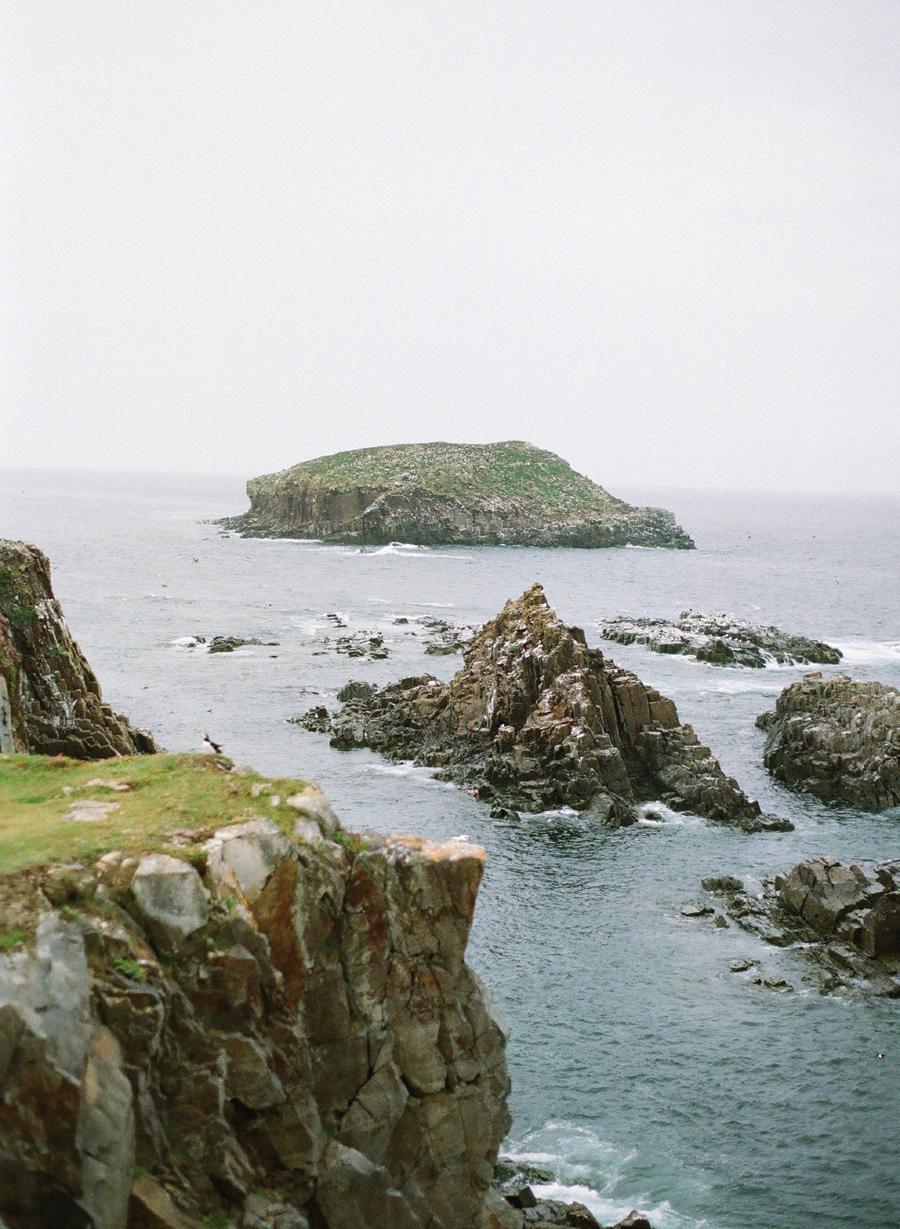 11. COLLIN J. ÖRTHNER
14. DAVID J. KENNY
GERALD WOLFE
11. COLLIN J. ÖRTHNER
14. DAVID J. KENNY
GERALD WOLFE
13 15 16 14
...DAY TURNED TO NIGHT
th e names of our lands and our kin continued on the stoney and the tsuutina the shuswap and the tkemlups the squamish to the hesquiath se as of prairies fields turned to chilly mountains tops fading into low valleys of fruit and fishing fa lling into pacific beachside and white tipped waters...

17. LORETTA MEYER
“As above. So below.”
18. FRANK MYERS
A cutover forest in Northwestern Ontario speaks of what settler culture and its rampant consumerism has cost the land.
19. MARK WALTON
“Migration,” from the Complicity series. This image was taken along Hwy 16 in Manitoba.

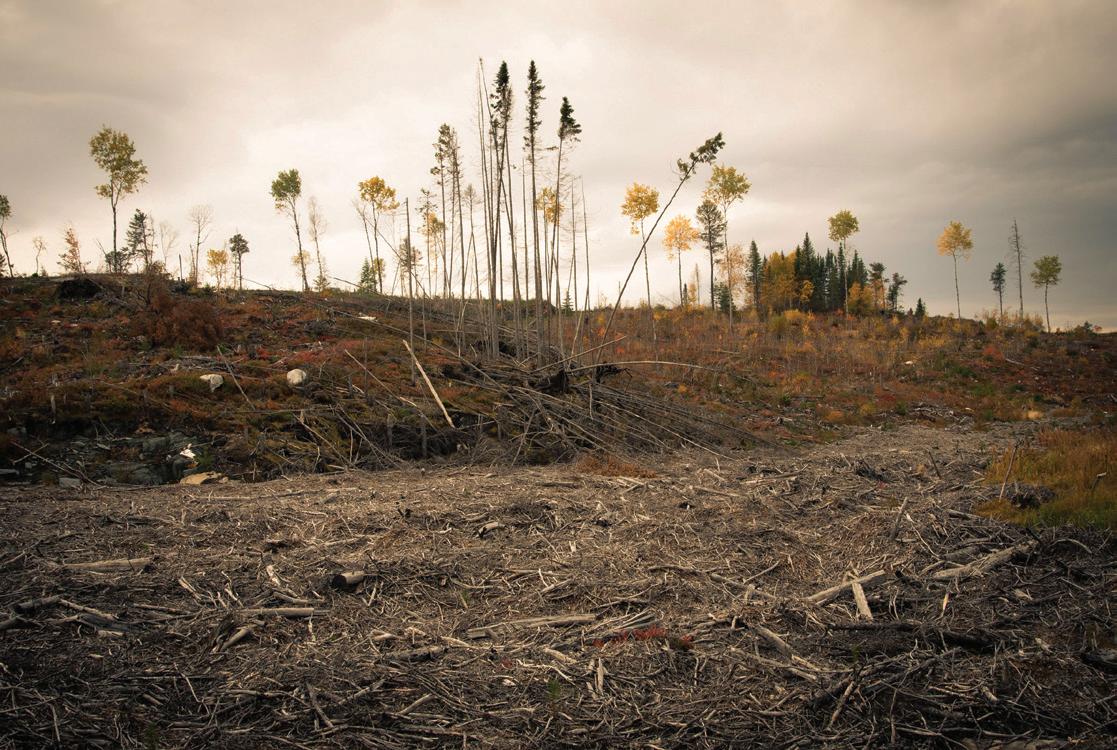
20. HENRY VANDERSPEK
A rainbow in the spray created by our tour boat in Western Brook Pond, Newfoundland.
21. MELISSA KRISTENSEN SMITH
We are nothing without the land. We live on it, we live off of it. Our time can be short upon it. Why do we not make more effort to preserve it for others?
22. CHRIS ALIC
This poem made me think of the land before humans eroded it and built over it.

17 18 19 18 photo ED




22 20 21 ...THIS LAND WAS REMEMBERED
wind
spoken out into the
an acknowledgement of who had been here and how we continue on

20 photo ED
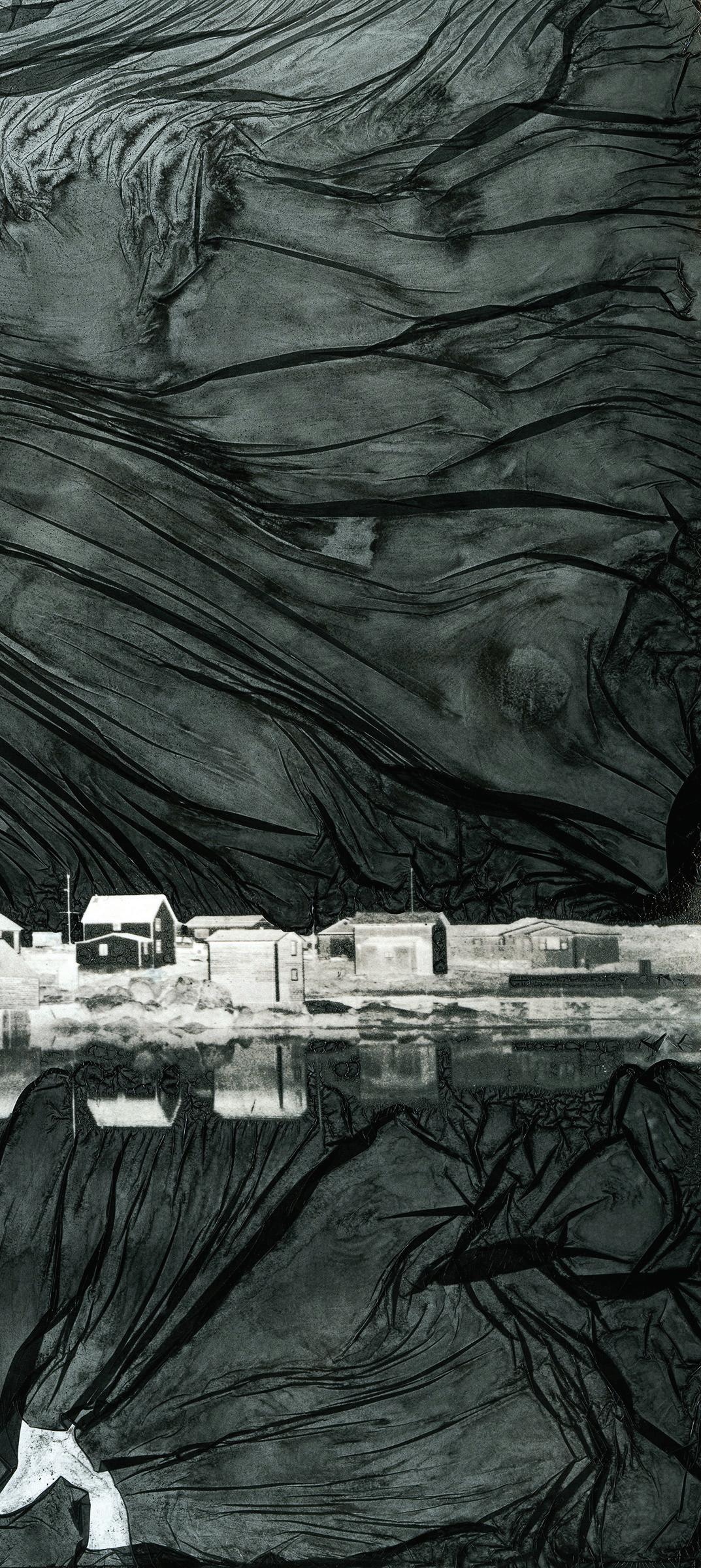
ELLA MORTON:

NORTHERN CURIOSITY
Arctic and analog explorations
BY CORINNA VANGERWEN
GROWING UP in Vancouver, Ella Morton has always been curious about the North. She noticed populations clustered along Canada’s southern border in the maps that she studied in school, but the vast expanse sitting above that density drew her attention. She wanted to know: “What’s all that in the North?”
Her love affair with icy landscapes truly began in 2010, at an artist’s residency in Skagaströnd, Iceland, on the edge of the Arctic Circle. “In the Arctic, there’s this power that you don’t know until you’re there,” she says.
This was the first of many trips that the Toronto-based photographer has taken to northern climates, travelling to places such as Hämeenkyrö, Finland; Hanstholm, Denmark; Ilulissat, Greenland; and the tiny 55-house village of Tjørnuvík on the Faroe Islands in the North Atlantic Ocean. Closer to home, she’s visited Iqaluit and Pangnirtung in Nunavut, and Fogo Island in Newfoundland and Labrador, where icebergs from Greenland commonly float by as they drift southward.
“Tilting Storm.” Lightjet print from mordançage, 2018. Captured in Tilting, Fogo Island, Newfoundland.
photo ED 21
BOTTOM: “Fuglefjorden.”

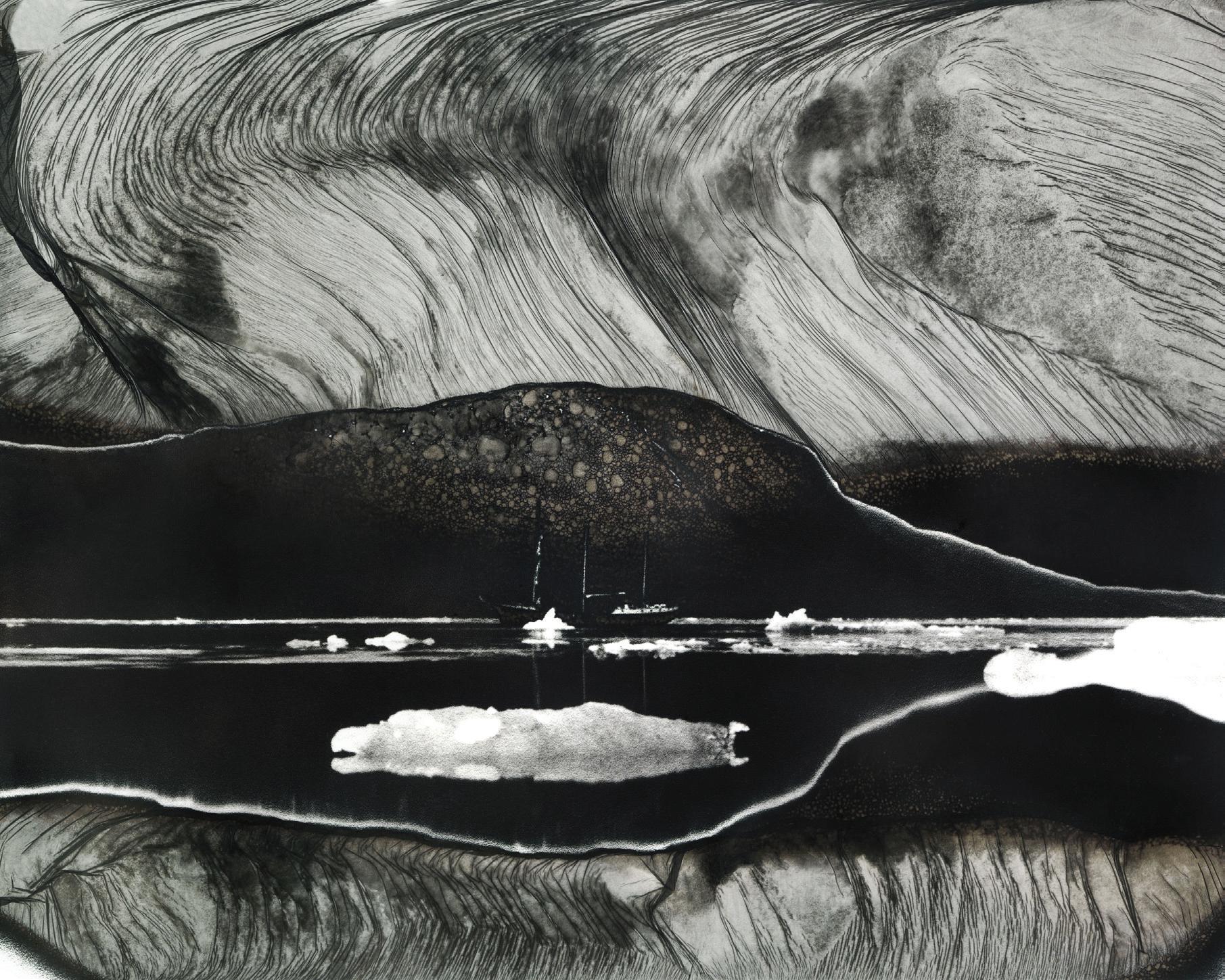 TOP:
“Blomstrandbreen #3.”
Lightjet print from soaked film, 2016.
Captured in Svalbard, Norway.
Lightjet print from soaked film, 2016.
TOP:
“Blomstrandbreen #3.”
Lightjet print from soaked film, 2016.
Captured in Svalbard, Norway.
Lightjet print from soaked film, 2016.
22 photo ED
Captured in Svalbard, Norway.

Psychedelic colours, warped veils, and imperfections like splotches imply decay and decline: a world that is falling apart.

 TOP: “Antigua at Blomstrandhalvøya #2.” Lightjet print from mordançage, 2019. Captured in Svalbard, Norway.
BOTTOM: “Pyramiden #1.” Lightjet print from soaked film, 2016. Captured in Svalbard, Norway.
TOP: “Antigua at Blomstrandhalvøya #2.” Lightjet print from mordançage, 2019. Captured in Svalbard, Norway.
BOTTOM: “Pyramiden #1.” Lightjet print from soaked film, 2016. Captured in Svalbard, Norway.
ED 23
photo

It was a 2016 trip to the Norwegian archipelago of Svalbard, though, that gave birth to Ella’s largest series of work. As part of an expeditionary residency program, Ella travelled aboard a barquentine tall ship, spending two weeks sailing through fjords, around islands, and alongside icebergs, north of 66°, within the Arctic Circle. Here, where the effects of global warming are most pronounced, she captured the first images for The Dissolving Landscape, a three-part series of more than 60 photographs that explores ideas around climate change.
Images of snow-laden landscapes — which we’re used to seeing as awe-inspiring majestic expanses in National Geographic–esque nature photography — are rendered gritty and surreal in Ella’s work. Psychedelic colours, warped veils, and imperfections like splotches imply decay and decline: a world that is falling apart. “It shows the sublime and the magic of the landscape, but also its fragility and uncertainty with climate change,” says Ella.
Ella relies on two alternative photography processes — film
soup and mordançage — to alter the film’s chemistry for each photo and to create the degraded effect of her Dissolving Landscape images.
She began experimenting with film soup recipes before her 2016 Svalbard trip, soaking unexposed large format film in such ingredients as wine, lemon juice, and beer to “mess it up in wonderful ways.” Her tests allowed her to discover what worked best and gave her a general sense of what textures to expect from different liquids. However, the results remain unpredictable. “I don’t know the colour tones. I don’t know the shapes,” says Ella. “I just more or less know that it’ll turn out okay.”
The other alternative photography process that Ella uses — mordançage — allows her to mechanically alter her images. Soaking silver gelatin prints in a chemical mixture, the whites become bleached and the darkest black parts of the emulsion start lifting, which Ella manipulates. The resulting dark veils often lend an ominous aura to the photos.
24 photo ED


Wet-plate collodion ambrotype on black glass with glue and gold pigment, 2022.
BOTTOM: “Blomstrandhalvøya.”
Lightjet print from soaked film, 2016. Captured in Svalbard, Norway.
LEFT PAGE: “Iceberg at Portal Point.”
Captured in Antarctica.
TOP: “Satellite Dishes.” Lightjet print from mordançage, 2019. Captured in Svalbard, Norway.
ED 25
photo

Upon returning home from her first trip to Svalbard, Ella initially thought she was done with The Dissolving Landscape and was prepared to move on to her next project — until she realized it was just the first chapter of what became a three-part series. (She also created two experimental short films during this time.) “I thought, ‘Gee, that’s silly that I went all the way to Svalbard to go to the Arctic. But I haven’t seen the Arctic in my own country.’”
Created over the course of five years, the three installments of The Dissolving Landscape are segmented by location: I – Svalbard; II – Finland, Iceland, Estonia; and III – Canada. “The North is part of our culture and curiosity,” says Ella.
Ella continues her exploration of alternative photography processes along with themes of climate change in a new work, Procession of Ghosts. These pieces are wet-plate collodion ambrotypes, the 19thcentury photographic process of adding light-sensitive emulsion to a glass plate, then exposing it to create an image. Ella then
breaks these glass plates — an act of destruction that calls to mind our destruction of the planet. Yet unlike The Dissolving Landscape, which speaks only to the bleakness of climate change, Procession of Ghosts adds a layer of optimism. Mimicking the Japanese art of kintsugi, Ella puts the pieces of the broken glass images back together, using gold pigment to highlight the repaired cracks. The philosophy of kintsugi — that damaged items are beautiful and worth saving — elicits ideas of hope for the planet. “It’s an interesting thought to apply to our relationship to the land and to the Earth,” says Ella.
This work poses some interesting new questions for viewers: Can we come out the other side of the climate emergency with newfound understanding and appreciation for the planet? and If we can reverse and repair the damage we’ve done, will we appreciate our planet more?
ellamorton.com
26 photo ED
“Rock, Apex.” Lightjet print from soaked film, 2019. Captured in Apex, Nunavut.


The Moving Landscapes of Steve Kean
 BY BART GAZZOLA
BY BART GAZZOLA
28 photo ED


WE ARE DEFINED BY THE LANDSCAPE, BUT THE LANDSCAPE IS ALSO DEFINED BY US.
A PLETHORA OF assumptions around landscape photography exist in contemporary artmaking — that landscape photos are “boring,” overdone, or simplistic. Often the personal experience of the photographer is dominant in the story of the image, privileging an individual’s moment over a wider resonance for the viewer. It’s not unusual to speak of art as a “place to stand.” An ablelist assertion when contemplating the work of fine art photographer Steve Kean.
photo ED 29

Steve describes himself as both a disabled photographer and a photographer with a disability, noting that these terms are not interchangeable. As the former, he lives and creates art in a world that isn’t designed to accommodate him and his wheelchair. As the latter, he is a person first and frames his disability as a part of him.
The artist offers the following about his Moving Landscapes series: “Growing up and seeing the world from a wheelchair, I didn’t think I would ever focus my photography on landscapes. Doing this work has allowed me to explore my roots, indeed the roots of all of us. Most of these images were made in the space between cities from moving trains and buses. Outside the confines of cities and free from the pollution from light and industrialization, I am free to explore and create. Moving Landscapes explores the intersection of the natural world and the one created by man. It is not lost on me that the very roads and rails upon which I have travelled were made by humans and slice through what was once unspoiled Nature. Moving through those scenes
at great speeds and showing that in my pictures is a reminder, perhaps a wakeup call of the fragile and fleeting beauty of Mother Earth. Nature takes her time and that no longer seems to be in the nature of man.”
Moving Landscapes began accidentally. After his professional camera equipment failed, Steve began to experiment with his iPhone. Travelling on a train, he played, and instantly got excited. “I had something,” he notes. “I could work with this idea. And that something has become Moving Landscapes.” Randomness is an intrinsic and essential part of his process, and he enjoys the gleeful surprise he feels when he sees what he has captured — whether intentionally or as “happy accidents.”
Steve provides us with a fresh perspective. His Winter Nocturne series (a body of work under the umbrella of Moving Landscapes) explores landscapes at night from a moving bus. The passage of time becomes an important theme in this work. Unlike traditional photographs that stop time each image, his work combines several
30 photo ED
“Winter Nocturne #4.” A gas station near Magnetewan, taken from a moving bus on the road to Toronto from Sudbury, ON. Printed on Japanese washi paper, 2023.

fleeting moments in a single frame.
Steve’s landscapes are soft but vibrant. The Winter Nocturne works have a hazy vagueness akin to romantic paintings but also reminds me that I’ve spent significant time on buses and trains. These are sleepy images of travel, where one moment becomes many or many moments become a singular blurred memory.
“Winter Nocturne #4” offers a suffused bleeding neon stain of light and colour that captures, for me, the vagaries of late night travel. It reminds me of a bus ride through Sudbury at 4:00 a.m. It’s a testament to the power of Steve’s images that this memory is pulled from me.
There’s also joy in this work, an emotion that is surely connected to how this series began. Prior to this landscape work, Steve worked on Spina Bifida Front to Back , a personal project about the disability he lives with and negotiates daily. He says, “It was exhilarating, exhausting, and beautiful all at the same time. It took a lot out of
me emotionally and physically and I needed a break. I discovered my techniques for Moving Landscapes while I had embarked on what I call a ‘pretty pictures’ phase, which was about creating for myself and nobody else.” A connection in considering this story can be drawn back to Steve’s own explanation about the difference between a disabled photographer and a photographer with a disability, “Moving Landscapes is more about being an artist first and less about being “an artist with a disability.”
For those who think that landscapes in art — and especially in photography — are an exhausted trope, Steve’s work offers us a different approach in considering how we negotiate the genre, and how a dialogue that is both unique and universal can be possible. He summarizes, “Perhaps Moving Landscapes and the ways I have found to enter into the natural world, in spite of my disability, are my way of voicing my fears, concerns, love, and awe for the world we live in and on.”
“Winter Nocturne #8.”
IG: @stevekeanphoto stevekean.com photo ED 31
Taken from a bus, north of King City. Printed on Japanese washi paper, 2023.
 From the Moving Landscapes series, an image made on a trip from Sudbury to Toronto, ON, 2023.
From the Moving Landscapes series, an image made on a trip from Sudbury to Toronto, ON, 2023.

ED 33
photo
LAND
JANET HINKLE OF MANY WORLDS
Toronto, ON
A multidisciplinary, research-based photographic work that expresses human-environment ecologies in Toronto.
IG:@_janethinkle_
34 photo ED PORTFOLIO


Vancouver, BC
I use a toy Diana camera to embrace a lack of control and imperfection when rendering an overwhelming natural world.
arlinffrench.com IG:@arlinffrenchart
36 photo ED
ARLIN FFRENCH
LANDS
 VERA SALTZMAN
VERA SALTZMAN
WHERE WILL THE FROGS SING?
Fort Qu’Appelle, SK
While the nostalgic view of Saskatchewan is a beautiful one, it is important to recognise the changes to our landscape have far greater impact than what is seen on the surface. Land stores carbon, provides homes for animals, holds water, and much more. As our relationship with the land and interconnectedness with it becomes fragile, numerous ecosystems are left hanging by a thread to survive. Through this work, a collaborative project with artist Sue Bland, I strive to understand our Canadian history and, my relationship with the land as a white settler, and to focus on reciprocity with land…for the sake of the land itself.
verasaltzman.com
IG:@vera.saltzman
photo ED 37

North Vancouver, BC
The land pushes through the frame, reclaiming it’s place — a reminder of what was before, and will be again. Captured on film, this double exposure speaks to the resilience and power of the land.
joannewhite.com
IG:@joannewhitephotography
38 photo ED
JOANNE WHITE THE LAND


JULIE FLORIO TRANSITIONS - GLACIAL EVOLUTION
Stoney Creek, ON
Progress is a word we use to describe how we are different from what’s come before. While landscapes reflect our ecological and ideological victories and failures, they don’t judge us. They simply ask: “Is this what you want? Is this view the progress you wanted to achieve?”
IG:@julieflorio.art
photo ED 39


40 photo ED

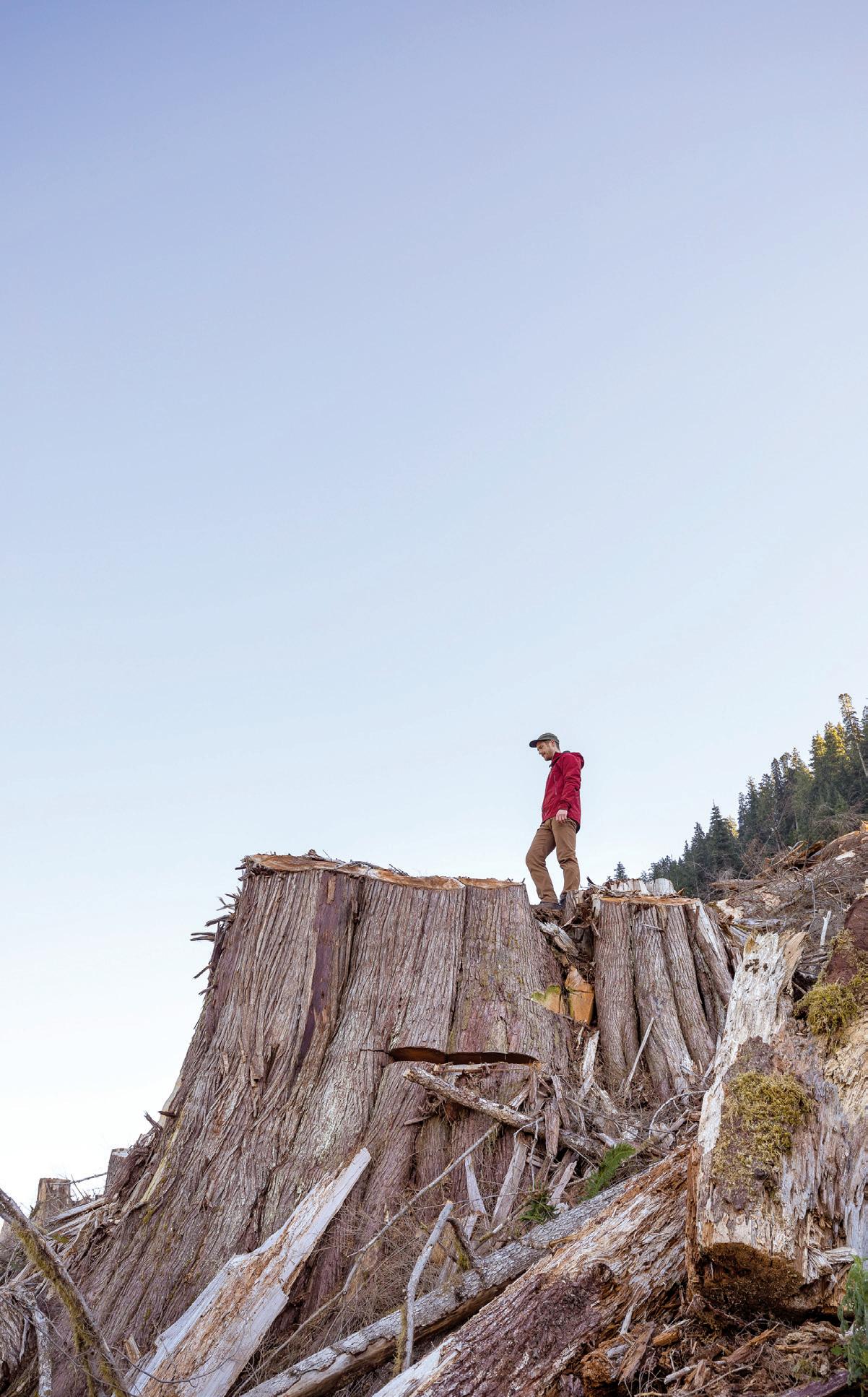
TJ WATT BEFORE/AFTER
Vancouver, BC
This is not a series I ever hoped to continue. These are before and after images of giant ancient cedars cut in the Caycuse watershed in Ditidaht territory on Vancouver Island. I revisited this magnificent grove that I had photographed earlier, only this time it was only the stumps of those same trees that were left.
Gone were the vibrant flourishes of red, green, and gold. Instead, a bleak, grey landscape lay before me, utterly unrecognizable from what I remembered. Heart-wrenching as they are, I hope these images stand as stark examples of what is happening everyday across BC and why we need to protect these endangered forests.
tjwatt.com/caycuse-before-after
photo ED 41

WHITE MUD VALLEY MOMENTS
Victoria, BC
Paradise in the Coulees, homestead generations cleaving to the land in remote Saskatchewan’s Whitemud Valley in the Coulees of the Cypress Hills.
sassamatt.com
IG:@sassamatt
42 photo ED
EDWARD PECK
 JEFF ADAMS RECKON & RE-IMAGINING Minesing, ON
JEFF ADAMS RECKON & RE-IMAGINING Minesing, ON
This work aims to reckon with my existence with the outdoors and the land.
ED 43
photo



RACHEL FOSTER
HORIZON
Vancouver, BC
This series of lumen prints compare Earth’s soil complexity in impressions of sand, humus, roots, and grass-seeds to that of Martian soil photographed by NASA’s High Resolution Imaging Science Experiment (HiRISE).
rachelverity.org
IG:@_rachelverity

44 photo ED NASA/JPL/University of Arizona


RICHARD MILLER & GENEVIÉVE THIBAULT FORGOTTEN | IMAGES | OUBLIÉES
Toronto, ON
To document the irreparable changes Gaspé Copper Mines inflicted on the land, Gaspesian Richard and Québécoise Geneviéve recreate archival panoramic images of unspoiled wilderness that Richard’s grandfather commissioned to promote the copper deposit he discovered a century ago.
dragonflydocumentary.wordpress.com genevievethibault.com
photo ED 45

46 photo ED

RICHELLE FORSEY DESIRE LINES Guelph, ON
Desire Lines aestheticizes the vulnerability of the environment and examines human activity on the land at the intersection of the sublime landscape and the built environment – where it meets the interests of capitalism and consumption.
richelleforsey.com
IG:@Richelle4C
PLACES: CHAOS AND BEAUTY Gatineau, QC
richardrobesco.com
IG:@richardrobesco
RICHARD ROBESCO
photo ED 47

INTUITIVE RITUAL
BY DARREN POTTIE
JAIME BLACK-MORSETTE:
48 photo ED

WE ALL HAVE A RELATIONSHIP to the land we walk on. How we choose to engage with that relationship can define our sense of self and our place in the world. Intentionally, the land is what envelops Jaime Black-Morsette’s body in the photographs that document her practice. Water, trees, snow, earth, and the stars surround her as she enters into their space. As a multidisciplinary artist of Métis and Finnish descent, her images come from performances and public installations she creates in and around Treaty 1 Territory.
In all aspects of her work she is dedicated to connecting with and fostering her relationship with the land. She spends long periods of time seeking the stories, knowledge, and history the land carries, paying respect and attention to the lessons she can learn. She then creates rituals and ceremonies that express these moments. It is work that is grounded in an understanding of the body and the land as sources of cultural and spiritual knowledge.
In “Untitled 1” and “Untitled 2,” a faint shadow of the artist fades into the expanse of the twilight. In one she is alone, in the other she is joined by another figure in a double exposure. Ghosts standing on the horizon encompassed by the stars. At any moment, either of the ghostly figures could disappear completely
photo ED 49
OPPOSITE PAGE: “Untitled 1.” Artist Jaime Black, 2020. Photo credit: Niklas Konowal.
THIS PAGE: “Untitled 2.” Artist Jaime Black, 2020. Photo credit: Niklas Konowal.
THIS PAGE:
“Resilience,” 2017. Artist/ photographer: Jaime BlackMorsette.
OPPOSITE PAGE:
“Re-Immersion” 2019. Artist: Jaime Black -Morsette.
Photo credit: Brandy Bloxom.

from the image, and yet the stars will clearly remain. The point of connection between the two figures where the double exposure coincides is strong to be sure, but not strong enough to solidify either presence. Rather than mournful, there is solace, even hope in the images, that with or without the passing of our time on the earth, the land lives on.
In her REDress project, Jaime hangs red dresses in public spaces. The garments are a visual and tangible response to the ongoing national emergency surrounding missing and murdered Indigenous women. It is a memorial born of grief and a defiant declaration that these women not be forgotten.
The image “Resilience” echoes the REDress project. Jaime dances in the forest as the sun begins its descent. Her billowing red dress is in full motion, hiding her cold feet in the snow. She gazes to the side softly, and in full concentration. A long exposure allows us a moment to sit with her body in motion. Both the performance
and the image remind me of her REDress project. A reflection of memory for missing and murdered Indigenous women, and a dance of defiance, a dance of continuance, and a dance of connection.
What strikes me about the photographs of her rituals is an incredible amount of intimacy that reverberates outwards. Jaime will capture her own performances or work with collaborators to share the essence of artistic intent that goes beyond simple documentation. A quiet confidence in which the artist gives the viewer moments of personal vulnerability, strength of conviction, and connection to the land through ritual. Rituals are ongoing activities that are driven by intention and give an elevated sense of meaning. For some, the first step towards deepening a relationship is to create a ritual that establishes a shared reality, regularly carving out moments in time that allow for deeper vulnerability. They can help create continuity and affirmation, and remind us how special that relationship is.
50 photo ED

By now photography scholars have become keenly aware of photography’s entrenched history in colonial violence. From its use in justifications for racial superiority, to mass spreading of hurtful and untruthful stereotypes, to the very language we use in our actions. Shooting, taking, capturing, headshots, and triggers. It is a language of aggression, and Jaime is keenly aware of this. She seeks ways in which we can shift this entrenched way of thinking. Her image capture process is collaborative. The artist as a performer must trust the process (whether through the use of a self timer or with the help of collaborators) to surrender to the ritual at hand. It reduces an authoritarian-style viewpoint in order to more authentically capture the vulnerability of the moment. She searches for ways to use the camera as a tool for conversations about decolonization, a method of sharing performance and installation to a wide audience, which is perhaps why these images pierce the veil of straight documentation. They are gifts of light.
In the image “Re-immersion,” Jaime’s nude body is submerged in dark water, curled into a quasi–fetal position. Her features
are obscured by the shimmer of the water and the small bubbles floating to the top. Again her gaze is focused downwards and I reflect on her plunge into the depths. I think about the uncomfortable chill of the water, the surrender to the elements, and an invigorating sense of cleansing, emerging refreshed.
We all have a relationship to the land we’re on. But how do you build that relationship? How can you deepen ties to a place, to a space that cannot speak? How do we build reverence and respect that can be counter to ingrained colonial teachings? Jaime doesn’t have the answers to these questions, or the many critical emergencies facing our generation. But in intuitive acts of deep vulnerability and self-portraiture she is willing to share with the viewer what she has gleaned from her time spent on the land. She dances in memory and dives into uncomfortable places from which we can re-emerge. She gives us these learnings as a road map for beginning our own journey towards understanding our responsibilities.
jaimeblackartist.com photo ED 51

Looking for gold? There’s no rush.
Looking for new photography frontiers to explore? Wondering where to go for retro equipment of the future? No need to saddle up for distant locales. We sponsor shows, fairs and auctions brimming with cool budget-friendly photographic equipment every spring and fall. Locations and dates? Check the PHSC website. www.phsc.ca


re:Placed
A river runs through it
BY ALAN BULLEY
LATELY, I’VE BEEN EXPLORING the idea that how we experience places — directly or via photographs — is affected by the names by which we know them.
While reading Liz Wells’ Land Matters: Landscape Photography, Culture and Identity, I was struck by this paragraph:
The act of naming is an act of taming. In Western culture, describing space as desert, or wilderness, or planet, represents potential comprehensibility and cues scientific and philosophical enquiry. By naming I mean both the terming of a space as, for example, wilderness, and the naming of such space, for example, Antarctica. Naming turns space into place.
Kichi Z b : Grande Rivière : Rivière des Outaouais/Ottawa River
ED 53
photo
Te-nagàdino-zìbi : Rivière Gatineau

This suggests that an “empty” piece of land takes on a new status once we attach a label to it. With the history of colonization in what is now called Canada, we can push this further: re-naming a place erases a previous reality and creates a new identity for it, ignoring whatever peoples might already have been present. In a real sense, the land has been re-placed.
As an example of this, I’ve been photographing a stretch of the Kichi Z b . On one bank lies Ottawa, Ontario, and on the other, Gatineau, Quebec. We often speak of the river separating the two cities and the provinces when, in fact, the water unites them. It is thanks to the river’s long history as a transportation and trading route that the two exist at all. It’s a question of perspective.
Re-naming has occurred all along the river, from the first contacts with Europeans until the present day, starting with the name of the river itself: Kichi Z b –> Grande Rivière –> Rivière des Outaouais/Ottawa River. French explorers first paddled up the river with Indigenous guides in 1603 and gave new names to the places they saw, but it was not until around 1800 that settlers arrived and began full-scale re-naming in earnest. Each new group layered its own language and ideas about the land on top of what was already there. And it continues to this day.
Seen this way, naming the “space” in a landscape photograph doesn’t just evoke a “place,” but creates a framework of meaning for viewers to interpret a location. My series of photographs featuring multiple names from different times and languages makes me see the river differently. The same waterway

Pasapkedjinawong : Chutes Rideau/Rideau Falls
54 photo ED


TE-NAGÀDINO-ZÌBI
Rivière Gatineau
Gatineau River
KABESHINÀN
Parc du Lac Leamy
Leamy Lake Park
AKIKOJIWAN
Chutes Chaudière
Chaudière Falls
PASAPKEDJINAWONG
Chutes Rideau
Rideau Falls
ASINABKA
Île Victoria
Victoria Island
KICHI Z B
Rivière des Outaouais
Ottawa River
MITIGOMIJOKAN
Deschênes
Mitigomijokan : Deschênes
photo ED 55

suggests different things to me depending on the name I associate with it.
I am now coming to see the land as a base that we view through filters of interpretation or, if you’re over a certain age, something like the layers of acetate transparencies. The titles we give to our photographs can either open up a range of meanings and readings or they can narrow our thinking to only one interpretation, usually that of the dominant cultural narrative. If I opt for a different name, I can help to recall or create an alternate layer of meaning. And if I choose no title at all for my landscape, that also has an impact on the way a viewer will attempt to read the photograph.
Place names and landscape titles are not neutral, but carry the weight of history, of empire, and of peoples. So I ask myself when I look at the land and the water through my lens: Am I standing beside the Kichi Z b , beside la rivière des Outaouais, or beside the Ottawa River ? And what does that mean for the way I think about this land, its peoples, and its politics?
Reference Wells, L. (2011). Land matters: Landscape photography, culture and identity. London: I.B. Tauris.
@alanbulley www.alanbulley.com
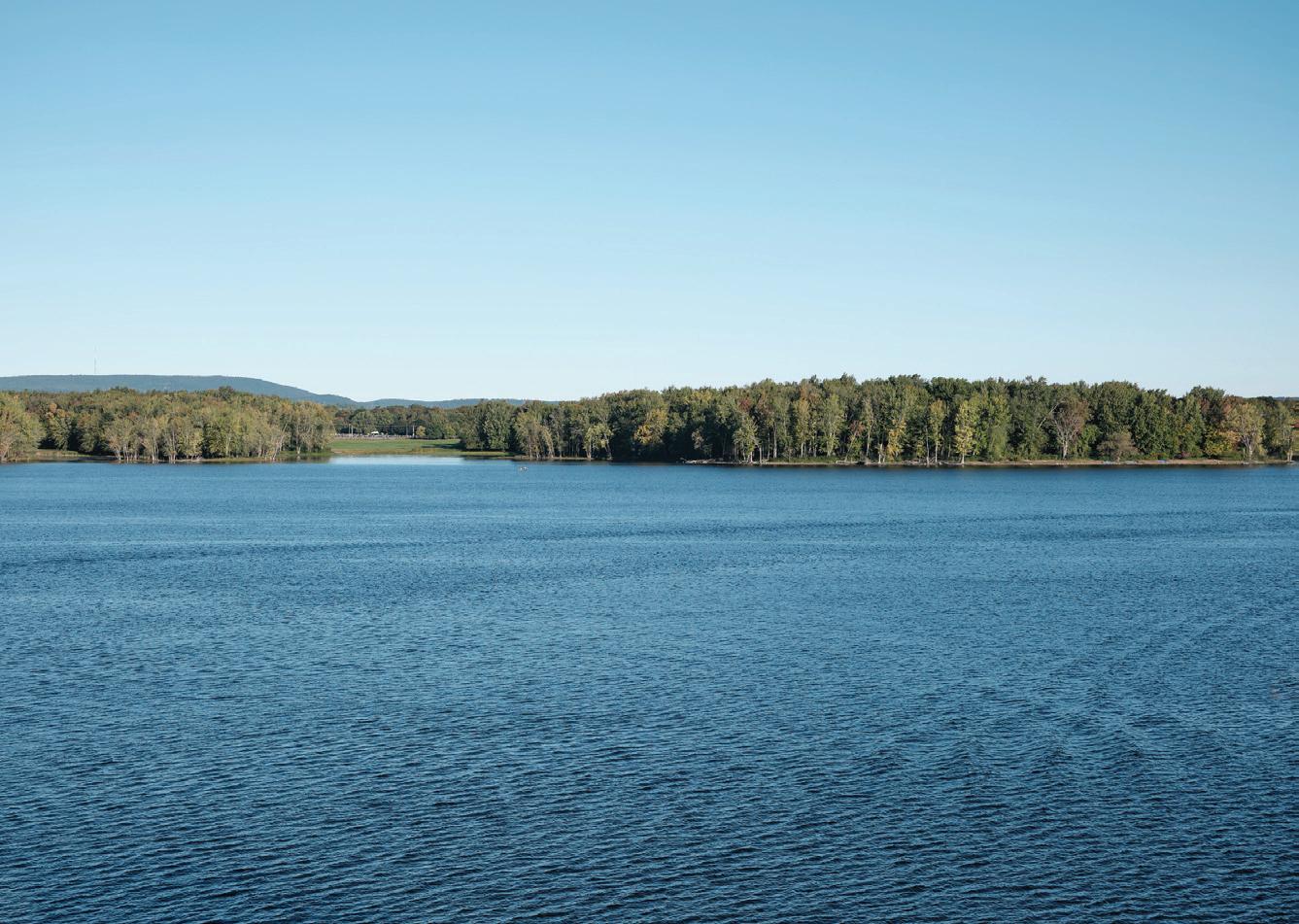
 Asinabka : Victoria Island/Île Victoria
Akikojiwan : Chutes Chaudière/Chaudière Falls
Kabeshinàn : Leamy Lake Park/ Parc du Lac Leamy
Asinabka : Victoria Island/Île Victoria
Akikojiwan : Chutes Chaudière/Chaudière Falls
Kabeshinàn : Leamy Lake Park/ Parc du Lac Leamy
56 photo ED


GURUSHOTS: CAPTIVATING LANDSCAPES
BILLED AS THE WORLD’S GREATEST PHOTO GAME, GuruShots is an international competition platform for photographers. Players get feedback from more than three billion monthly voters and try to work their way up through rankings, from Newbie to the ultimate status (and bragging rights) of Guru.
GuruShots’ challenges are voted on by the platform’s Gurus and the wider community, with a fresh challenge every day. Winners can receive prizes from GuruShots’ sponsors such as Adorama, Kodak, Lowepro, and Lensbaby.
From mountain tops to ocean views, the Captivating Landscapes Challenge showcases a world of wonderful interpretations on this theme.


photo ED 57 1 2 3
1. GURU’S TOP PHOTOGRAPHER WINNER
Ivano Pitera • Italy
2. PNW Sasquatch • USA
3. José Carlos Machado • Portugal



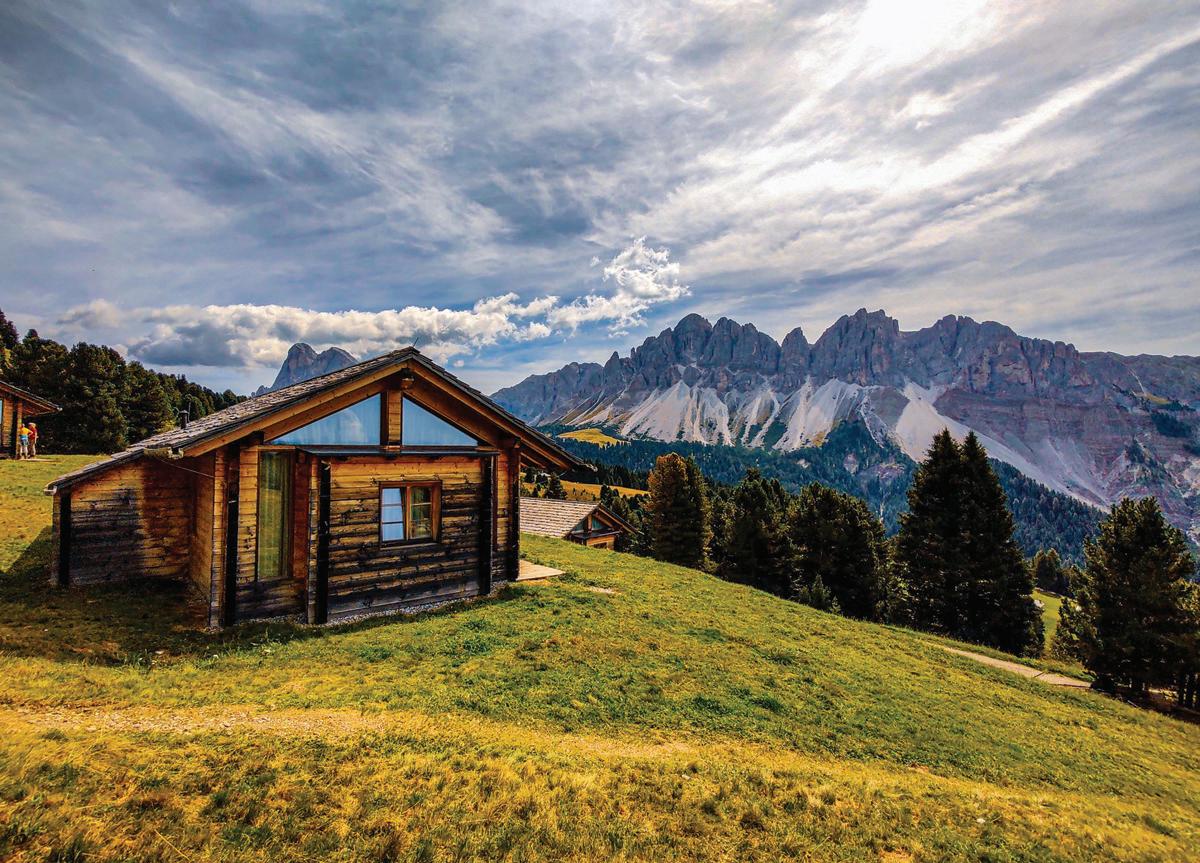



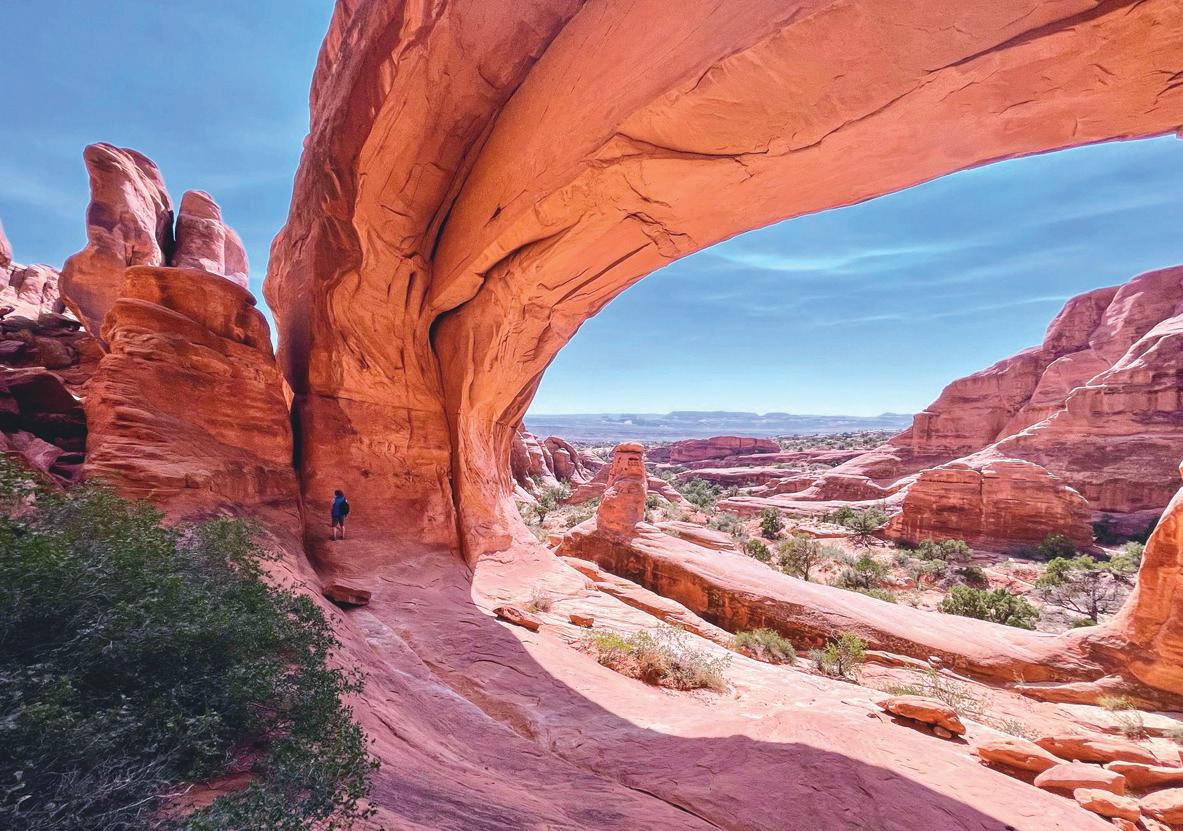
 4. GURU’S TOP PICK WINNER Gianpiero Secco • Italy
5. Angelo Di Stella • Italy
6. Atle Rasmussen • Norway
7. Daniel Reeves • USA
8. Gordana Bukumiric • Italy
9. Agne Jotautiene • Lithuania
10. Keith Sendall • USA
11. Kenneth Stewart • USA
12. Kirrily Steele • Australia
13. Laimute Kuriene • Netherlands
14. Lily Xu • Germany
15. Nate Riggins • USA
16. Yifan Wang • USA
17. Robert Varley • USA 18. Saurav Dutta • Germany
19. Teri Madewell • USA
20. The Enigma • USA
21. Unnamed • Italy
22. Tomasz Czarnecki • Poland
23. TOP PHOTO WINNER
4. GURU’S TOP PICK WINNER Gianpiero Secco • Italy
5. Angelo Di Stella • Italy
6. Atle Rasmussen • Norway
7. Daniel Reeves • USA
8. Gordana Bukumiric • Italy
9. Agne Jotautiene • Lithuania
10. Keith Sendall • USA
11. Kenneth Stewart • USA
12. Kirrily Steele • Australia
13. Laimute Kuriene • Netherlands
14. Lily Xu • Germany
15. Nate Riggins • USA
16. Yifan Wang • USA
17. Robert Varley • USA 18. Saurav Dutta • Germany
19. Teri Madewell • USA
20. The Enigma • USA
21. Unnamed • Italy
22. Tomasz Czarnecki • Poland
23. TOP PHOTO WINNER
4 5 8 6 9 10 11 58 photo ED 7
Roland Hank • Germany













photo ED 59 23 12 15 18 21 22 13 16 19 14 17 20 See more entries from this challenge online: photoed.ca/post/gurushots-landscapes
THE GALLERY
SUBMISSIONS BY OUR READERS

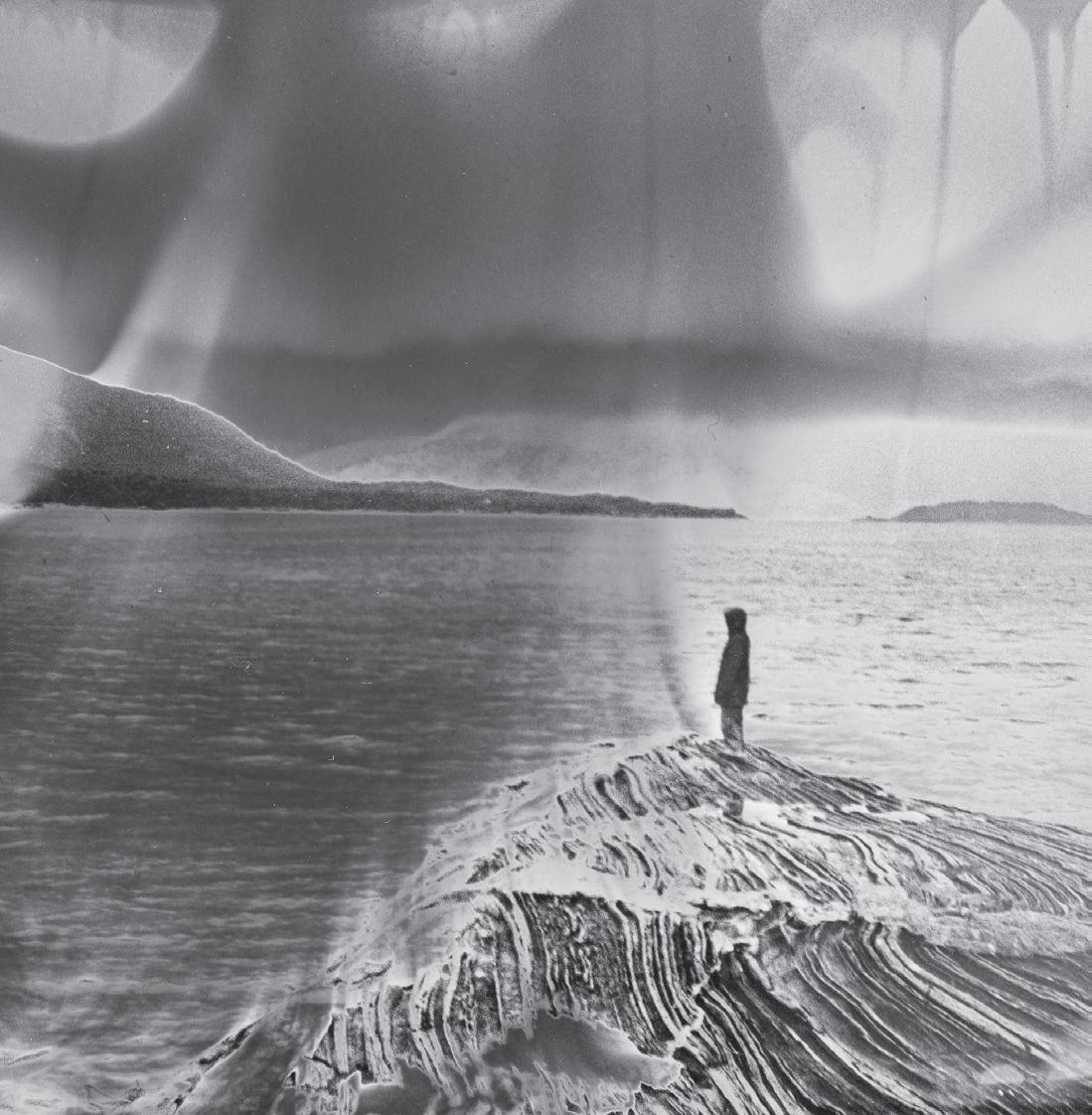

1. THOMAS BRASCH
Toronto, ON PLANET ATACAMA thomasbrasch.com
IG: @thomasbrasch
2. XIATONG CAI Ottawa, ON THE DISAPPEARING-IT’S RAINING; WILL THE RAIN EVER STOP? xiatongphotography.com IG:@xiatongc
3. CHRISTOPHER SCHMITT Ottawa, ON CAPTURING THE FLATS cjsfoto.ca IG:@CS_Photos
4. ROB GRAHAM Toronto, ON TOMMY THOMPSON PARK, TORONTO’S ARTIFICIAL WILDERNESS robgrahamphotography.com IG:@robg_analog
5. FELICITY SOMERSET Scarborough, ON INTIMATE LANDSCAPE felicitysomersetphotography.com IG:@felicitysomersetphotography
6. JOSIE LYNN AMENT Rockwood, ON SUMMER ON GEORGIAN BAY IG:@eyesopencreative @knowitlikeapoet
7. PAIGE TAYLOR WHITE Vancouver, BC UP, UP, & AWAY paigetaylorwhite.ca
3. 2.
1.


BUT WAIT, THERE’S MORE.. .
Check out the DIGITAL EDITION EXTRA ONLINE to see more LAND-based images by more Canadian photographers.


ALSO FEATURING:
ATIA POKORNY
BELLA DOHERTY
BRIAN GROBERMAN
BRIAN LAVERY
CARL RITTENHOUSE
CATHERINE BELSHAW
CHRISTOPHER SCHMITT
DALE M REID
E MCDONOUGH
EDRISS SYDEQI
EMMA JULIETTE SHERLAND
EMMA KERN
FELICITY SOMERSET
GAIL (VILOKINI) ABBOTT
GARETH JONES
GERALD WOLFE
GERMAN GARCIA
HENRY TATARIN
HENRY VANDERSPEK
JANET HINKLE
JESSE MILETIN
JOANNE WHITE
JOE ATIKIAN
JOHN JETHI
JOSLYN PANASIUK
JULIE FLORIO
KATHRYN FULLERTON
KATIE ROULIER
LAURA JANE PETELKO
LAURA AYRES
LEAH OATES
LEAH MURRAY
LORETTA MYER
MANDY KLEIN
MARTHE BUJOLD
MICHELINE GODBOUT
MILENA VASQUEZ
NATALIE GOULET
NOZOMI KAMEI
OR DAVID
PAIGE WHITE
PIROSKA MIHALKA
RACHEL FOSTER
RAMO/HCKYGRLPHOTO
R ICHARD MILLER + GENEVIÉVE THIBAULT
RICHARD ROBESCO
RICK MCGINNIS
ROB GRAHAM
RYAN C RITTENHOUSE
SHELDON LEVY
TERRY HUGHES
THOMAS BRASCH
TIMOTHY KOZLIK
XIATONG CAI
ZIYANG WEI
+ MORE!
Check it out online: photoed.ca/digital -issue
photo ED 61
4. 7. 5. 6.
BEST IN SHOW
THE WINNING PHOTO FROM THE BELL FIBE SHUTTERSPEED PHOTOGRAPHY CHALLENGE

WES PERRY FUNDY ECHO
Moncton, NB
“Fundy Echo” taken at Irving Nature Park, Saint John, NB, is the winning photo from the landscape challenge in “Shutterspeed Photography Challenge,” a photography reality show aired on the Bell Network’s Fibe TV hosted by Mark Hemmings.
“The choice of black and white builds a lot of drama, it means you can see in the sky, where you can see a lot of detail in the clouds. Also the choice of using a long exposure adds a level of technical skill.” — Nate Gaffney, episode co-host.
IG: @wesperryphoto
62 photo ED
One of the first women admitted to England’s prestigious Royal Photographic Society, Minna Keene (1859–1943) gained international acclaim for her Pictorialist compositions, while her daughter, Violet Keene Perinchief (1893–1987), became a celebrated portraitist in her own right — and yet both have been largely overlooked in the history of Canadian photography.
The Minna Keene and Violet Keene Perinchief Collection at The Image Centre (IMC) is an extraordinary resource for the study of two of Canada’s pioneering female photographers. With a growing collection of more than 400,000 photographic objects and an innovative scholarly research program, the IMC is a hub for the preservation and study of photography. Learn more at theimagecentre.ca

33 Gould Street
Toronto, Canada
416.979.5164
Admission is always free. theimagecentre.ca
Minna Keene, View of Forked River Through Forest and Mountains 1914–1915, carbon print. The Minna Keene and Violet Keene Perinchief Collection, The Image Centre, Gift of the Sturrup Family, 2020













A nityPhotoredefinestheboundariesforprofessionalphotoeditingsoftware. Withameticulousfocusonworkflowito erssophisticatedtoolsforenhancing, editingandretouchingyourimagesinanincrediblyintuitiveinterfacewithall thepowerandperformanceyouneed. AvailableformacOS,WindowsandiPad–subscription-freeat: a nity.serif.com/photo Thefastest,smoothest,mostprecisephotoeditor formacOS,WindowsandiPad
CanaryWharfBikes byJonathanPearce






































































 Featured: Michelle Valberg
Featured: Michelle Valberg





















 11. COLLIN J. ÖRTHNER
14. DAVID J. KENNY
GERALD WOLFE
11. COLLIN J. ÖRTHNER
14. DAVID J. KENNY
GERALD WOLFE












 TOP:
“Blomstrandbreen #3.”
Lightjet print from soaked film, 2016.
Captured in Svalbard, Norway.
Lightjet print from soaked film, 2016.
TOP:
“Blomstrandbreen #3.”
Lightjet print from soaked film, 2016.
Captured in Svalbard, Norway.
Lightjet print from soaked film, 2016.


 TOP: “Antigua at Blomstrandhalvøya #2.” Lightjet print from mordançage, 2019. Captured in Svalbard, Norway.
BOTTOM: “Pyramiden #1.” Lightjet print from soaked film, 2016. Captured in Svalbard, Norway.
TOP: “Antigua at Blomstrandhalvøya #2.” Lightjet print from mordançage, 2019. Captured in Svalbard, Norway.
BOTTOM: “Pyramiden #1.” Lightjet print from soaked film, 2016. Captured in Svalbard, Norway.






 BY BART GAZZOLA
BY BART GAZZOLA




 From the Moving Landscapes series, an image made on a trip from Sudbury to Toronto, ON, 2023.
From the Moving Landscapes series, an image made on a trip from Sudbury to Toronto, ON, 2023.



 VERA SALTZMAN
VERA SALTZMAN








 JEFF ADAMS RECKON & RE-IMAGINING Minesing, ON
JEFF ADAMS RECKON & RE-IMAGINING Minesing, ON





















 Asinabka : Victoria Island/Île Victoria
Akikojiwan : Chutes Chaudière/Chaudière Falls
Kabeshinàn : Leamy Lake Park/ Parc du Lac Leamy
Asinabka : Victoria Island/Île Victoria
Akikojiwan : Chutes Chaudière/Chaudière Falls
Kabeshinàn : Leamy Lake Park/ Parc du Lac Leamy












 4. GURU’S TOP PICK WINNER Gianpiero Secco • Italy
5. Angelo Di Stella • Italy
6. Atle Rasmussen • Norway
7. Daniel Reeves • USA
8. Gordana Bukumiric • Italy
9. Agne Jotautiene • Lithuania
10. Keith Sendall • USA
11. Kenneth Stewart • USA
12. Kirrily Steele • Australia
13. Laimute Kuriene • Netherlands
14. Lily Xu • Germany
15. Nate Riggins • USA
16. Yifan Wang • USA
17. Robert Varley • USA 18. Saurav Dutta • Germany
19. Teri Madewell • USA
20. The Enigma • USA
21. Unnamed • Italy
22. Tomasz Czarnecki • Poland
23. TOP PHOTO WINNER
4. GURU’S TOP PICK WINNER Gianpiero Secco • Italy
5. Angelo Di Stella • Italy
6. Atle Rasmussen • Norway
7. Daniel Reeves • USA
8. Gordana Bukumiric • Italy
9. Agne Jotautiene • Lithuania
10. Keith Sendall • USA
11. Kenneth Stewart • USA
12. Kirrily Steele • Australia
13. Laimute Kuriene • Netherlands
14. Lily Xu • Germany
15. Nate Riggins • USA
16. Yifan Wang • USA
17. Robert Varley • USA 18. Saurav Dutta • Germany
19. Teri Madewell • USA
20. The Enigma • USA
21. Unnamed • Italy
22. Tomasz Czarnecki • Poland
23. TOP PHOTO WINNER


































